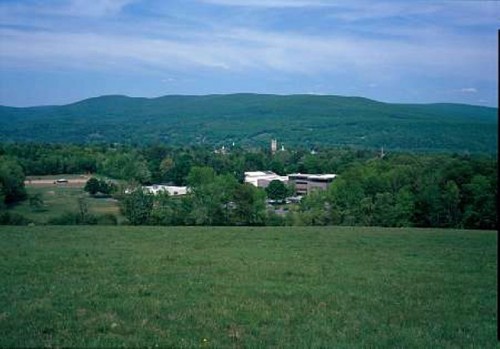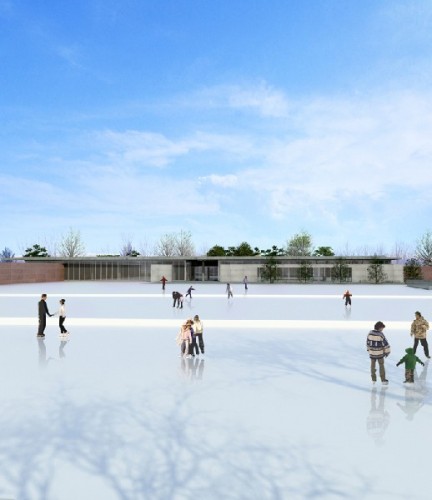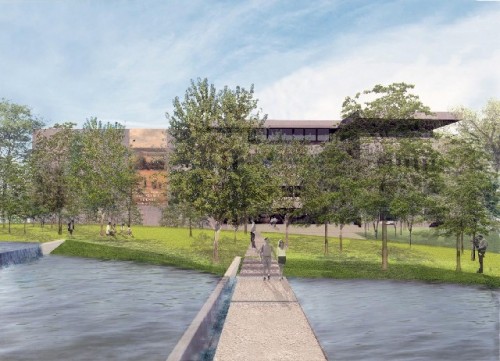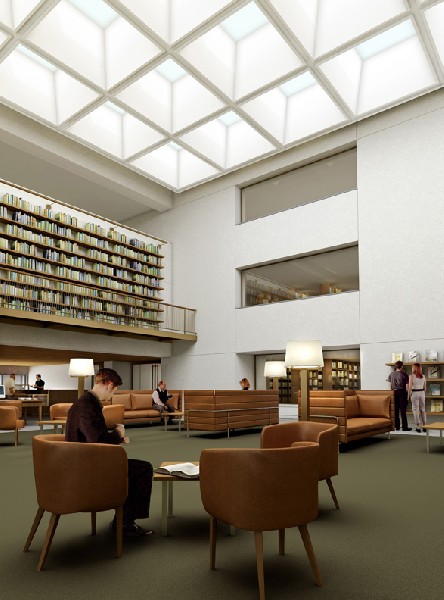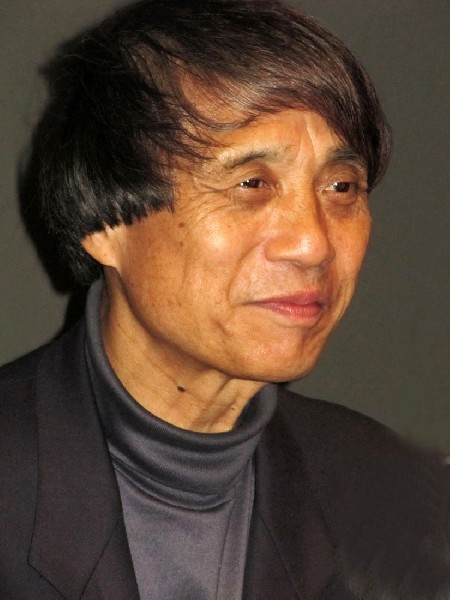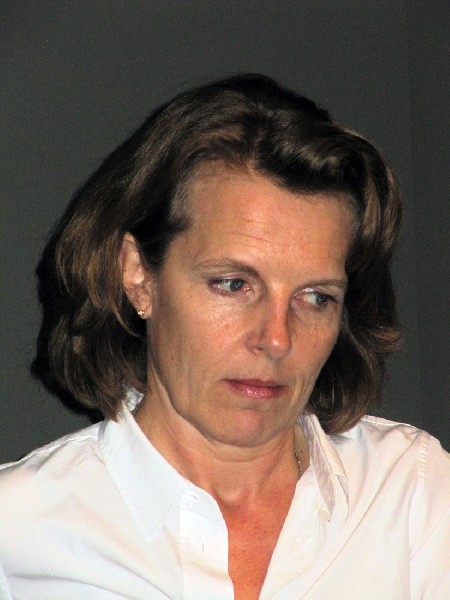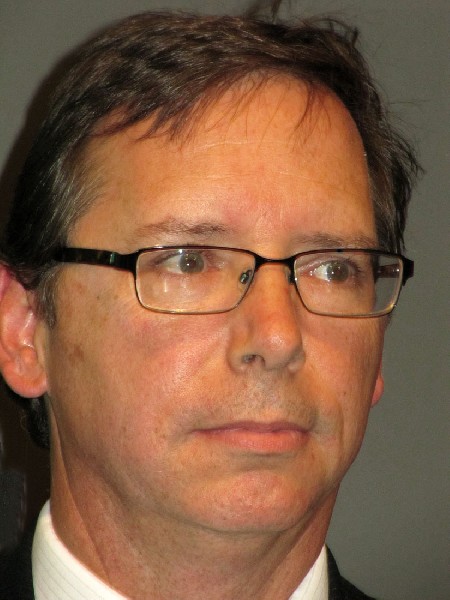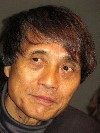Most of The Clark Art Institute Closes in November
$145 Construction and Renovation by June 2014
By: Charles Giuliano - Oct 21, 2011
The Clark Art Institute has an average annual attendance of some 200,000 visitors. Next to Tanglewood those numbers make it the second greatest attraction in the Berkshires. The more so because it lures tourism to Northern Berkshire County, a harder sell than Southern Berkshire County which is closer to the entrance of the Mass Pike in Lee, and an hour less of driving time to New York.
The Clark was founded in 1950 and opened in 1955. It was located in Williamstown for its synergy with Williams College. Over the past decade plus it has also formed an important and continually evolving relationship with Mass MoCA in North Adams.
In an interview with Michael Conforti, the director of the Clark, which we will post separately, he disclosed that in the past decade the Clark has contributed some $2 million in programming at Mass MoCA. Conforti was asked what progress is being made on the building it has secured on the sprawling former Sprague Electric campus of Mass MoCA? Plans for the long term use of the MoCA/ Clark building are still under development. On hold, as Conforti told us, until the Clark has settled its current development which will be completed by June of 2014.
The connection between Mass MoCA, the Williams College Art Museum, the Williamstown Theatre Festival, MCLA and the Clark have strengthened the overall economy of a hard strapped region of the Commonwealth.
In November the primary galleries of the Clark will close for the final phase of a $145 million renovation and construction program designed by Pritzker prize winner Tadao Ando.
During a press conference at the Clark it was announced by Conforti that the museum has secured some $100 million and a special loan for $30 million. In these challenging economic times that is a formidable accomplishment.
While there has been a gradual improvement in tourism to its world class cultural resources dramatically reducing 200,000 visitors to the Clark may be more of a catastrophe than a setback for Northern Berkshire County.
The construction phase at the Clark will create some 500 jobs over the next three years with an economic impact estimated at $9 million. Those are temporary jobs and it is difficult to say how many local hires that represents. Once the Clark project is completed there was no information provided about increased full time employment resulting from expanded physical elements and related programming.
It is the norm for smaller and mid size museums such as the Clark to shut down and go off line for extended periods of time during renovation and construction.
Much to the credit of the executive skills of Conforti and his staff the Clark has creative strategies to maintain a level of programming both on its campus, in New York City, and globally.
From the history of the Clark we learn that “Sterling and Francine Clark had collected art strictly for pleasure. They were interested in establishing a public art gallery for their collection. Sterling considered founding a museum in Cooperstown, New York, near his family’s home, or bequeathing everything to the Metropolitan Museum of Art, but by 1946 had decided to create a museum on property he purchased at the corner of Park Avenue and Seventy-second Street in Manhattan. Shortly thereafter, however, the Clarks resolved to build their museum outside of New York, and were drawn to the Berkshires of Western Massachusetts.
“The Clarks had a strong familial tie to Williams College, where Sterling's grandfather had served as a trustee between 1878 and 1882 and his father was a trustee from 1882 to 1886. Encouraged by a series of conversations with the leaders of Williams College and its art museum, Sterling and Francine Clark first visited Williamstown in the early autumn of 1949. This visit was followed by a warm and friendly correspondence between the leaders at Williams and the Clarks, who resolved to situate their museum within walking distance of the college. A charter for the new Institute was signed on March 14, 1950, just six short months after the Clarks first visited Williamstown.”
During a slide presentation Conforti showed the New York buildings where the Clarks originally planned to locate their museum with its great strength in French Impressionist paintings.
The Clark is one of the most richly endowed small museums in America. Like all institutions, however, its portfolio was reduced over the past several years. This resulted in staff and budget reductions particularly during a time of expansion and renovation.
This past year all of the Clark’s many works by Renoir drew some 300,000 visitors in a special exhibition at the Prado Museum in Madrid. When the renovation of the Clark is completed, with an increase of some 45% of exhibition space for the permanent collection and special exhibitions, the museum will host a selection of masterpieces from the Prado.
Rhetorically, Conforti asked the assembled media why world class museums like the Prado are willing to send priceless masterpieces to a small, rural museum in relatively remote Western Massachusetts? The answer is that by some cosmic serendipity and a quirky decision by Sterling and Francine their collection includes priceless masterpieces coveted for loans by the world’s great museums.
For emphasis Conforti asked Richard Rand, the museum’s chief curator, approximately how many loans it processes in any given year? In the horse trading of museum directors, contradicting the advice of Polonius to his son, one must both a borrower and a lender be.
This has been particularly evident this past summer and will be until the construction is completed. The treasures of the Clark have been on the road and Conforti announced that the tour has now been extended to include five cities in Asia.
In clever marketing apparently these stops on the pilgrimage road also include presentations and promotions of the cultural and tourism aspects of the Berkshires.
With humor Conforti expressed regret that visitors to the Clark will find most of its treasures not on view. But he advised those who “need a fix" to book flights around the world.
During the Q&A I suggested to Conforti that it recalled the medieval strategy of parading the relics while raising funds to build cathedrals. He seemed inspired by that analogy which has become a standard strategy for museums undergoing costly renovations. There are revenues entailed in the loan of works, markers for future loans, and the pr strategy of promoting a rural collection that relatively few ever visit.
Reflecting on the unique history of the founders of the museum Conforti announced that it is opening a New York office with programming in what is now The Explorer’s Club. Lisa Corin, the former director of the Williams College Museum of Art, will be working on a project in that space with installation artist Mark Dion.
As a young man Sterling Clark was a part of an expedition to remote Northern China. That event, the publication which resulted, and the artifacts unearthed will be the focus of another museum project for Williamstown during the summer of 2012.
Although the main buildings and galleries of the Clark will close in November exhibitions and programming will continue in the galleries of the Stone Hill Center completed a couple of years ago by Ando. And in the Manton Research Center. There will be a dense salon style hanging of works from the permanent collection which are not often displayed. School visitation programs will be developed based on the works on view. Rand described this as an opportunity to bring out works from storage.
Three years from now when construction and renovation have been completed just what might one expect?
With its vast rural campus the museum has the opportunity to spread out horizontally. As an architect Ando is noted for land hugging solutions, often with reflecting pools, that are minimalist, Bauhaus/ modernist austere and perhaps cold. There is not generally a wow factor in the architecture of Ando. His approach is on the other end of the spectrum from the flamboyant, eccentric designs of Frank Gehry. While less gimmicky perhaps the understated structures of Ando will endure over time.
But from what we have seen in the slide and video presentations the container will be subordinate to what it contains. The Ando structures are unlikely to be on the bucket list of must see destinations. Future generations will travel to the Clark for its great collections and not to bask in the buildings as monuments. This seems to be a sharp departure from recent museum projects. Arguably it is a welcome change and a signifier of more conservative taste. In the design program function has been given priority over form.
In the trend to create flashy, sculptural museum buildings often what looks great on the outside does not mesh with what is seen inside.
The strategy of Ando is to build into and embrace rather than impose on and violate the sense of nature.
That low profile is intended to draw attention to the rolling, gentle undulations and subtle horizon line of the ancient Berkshire mountains. Geologically it is one of the oldest regions on earth with a great history embedded in its glacial boulders.
In a presentation of some of his museums and chapels Ando strongly conveyed spirituality as a component of his practice. The intent it to create harmony and cohesion with the Clark’s undistinguished existing buildings. The oldest building from 1955 was designed in a generic, ersatz neo-classicism. It is completely devoid of character or personality. That blandness contrasts with the brutalist (a style and term) later addition with its awkward device of a connecting bridge.
The Ando plan is to conflate these undistinguished elements in a manner that does not attract attention to itself. In so doing, arguably, to hide the mistakes and make the best of prior weak and ill advised design decisions.
The current atrium and entrance, which was originally conceived as a sculpture court, has by necessity evolved awkwardly into a visitor’s center, café and book store. In its next incarnation it will emerge as a spacious reading room abutting one of the great art history libraries and study centers in the nation. The Clark regularly hosts distinguished research fellows and has a master’s in museum studies program in conjunction with Williams College.
The project development is actually shared between Ando, designing new construction, and the firm of Annabelle Seldorf a specialist in reuse architecture. While the current galleries will be refreshed and updated with climate control and improved lighting the changes will be for the most part invisible to visitors. Part of this plan related to new construction will be to reconfigure an increment of the existing space as galleries for the decorative arts.
Of particular interest to visitors, especially local residents, will be the manner in which The Clark is enhancing its spectacular Berkshire campus. There will be two miles of manicured hiking paths. Next to Ando's 44,400 square foot Visitor, Exhibition and Conference Center will be a vast, 1.5 acre, unifying, terraced, reflecting pool. It entails green design that collects, and cleans rain water for consumption. During the winter months it will be a family attraction as an enormous skating pond.
And all of that world class art.
This is going to take some time and patience. We will see how this down time at the Clark plays out next summer. In a recovering economy for the region three years can be a long time.
It will also be a significant challenge for the Northern Berkshire cultural institutions to develop creative thinking and new strategies. Now more than ever that leadership role falls on Mass MoCA and, to a lesser extent, the Williamstown Theatre Festival.
Next summer will require selling the sizzle while we’re missing the steak.

